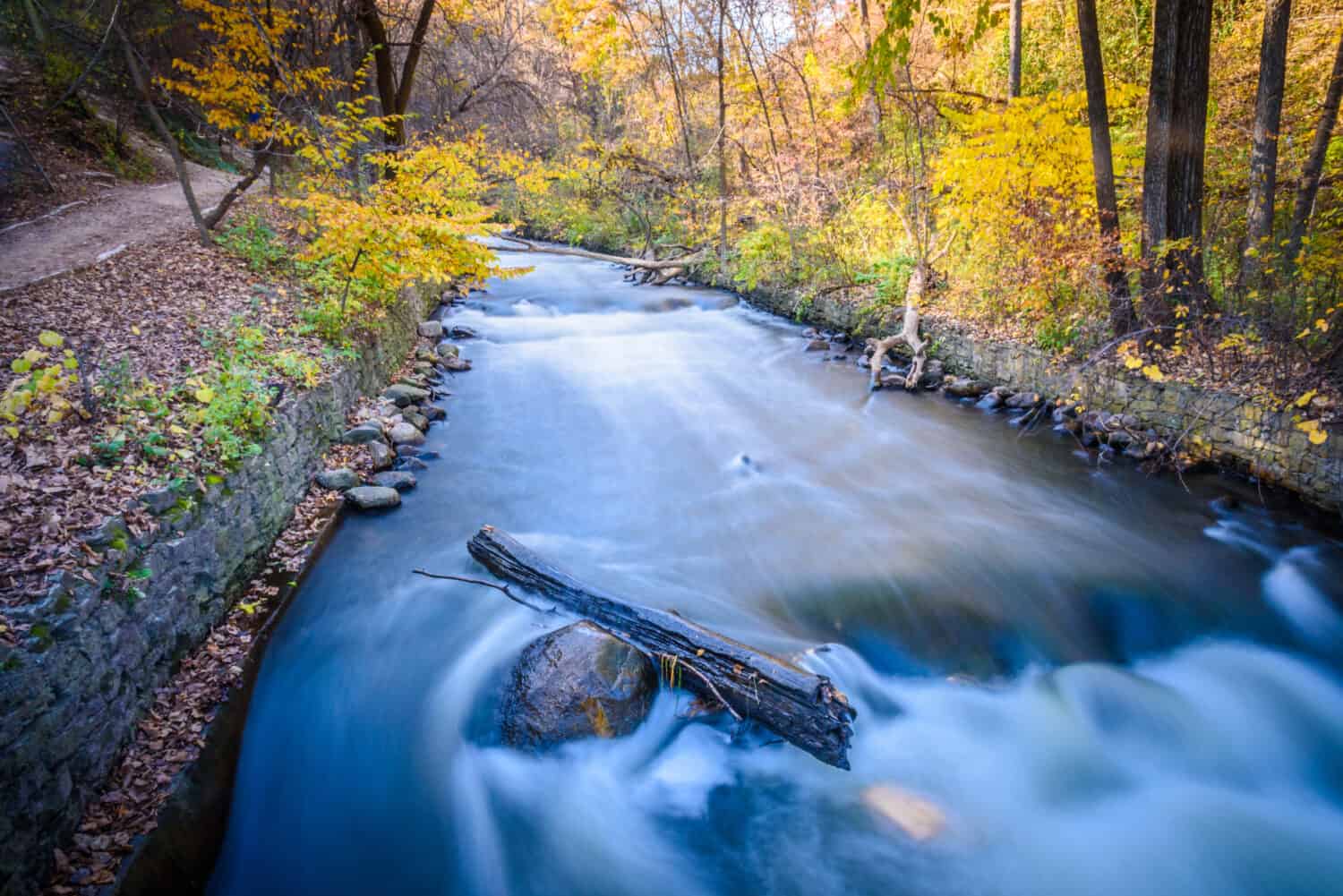Minnesota, often nicknamed the ‘Land of 10,000 Lakes,’ is not just about crystal-clear lakes. Delving deeper, you’ll discover another gem this state boasts — natural springs. Often hidden and less trodden, these springs paint a mesmerizing picture of Minnesota’s natural beauty.
1. Minnehaha Falls

Before their actual name, these falls were known as Little Falls or Brown’s Falls.
©Chris LaBasco/Shutterstock.com
Located in the southern part of Minneapolis, this landmark is not just a spring but a city’s beloved icon. This 53-foot waterfall, fed by the spring of Minnehaha Creek, offers a mesmerizing sight, especially after heavy rain. These falls are very accessible via a scenic walk from the nearby parking lot. Thus, they are the perfect spot to escape the city and a hidden treasure to discover for visitors.
2. Coldwater Spring
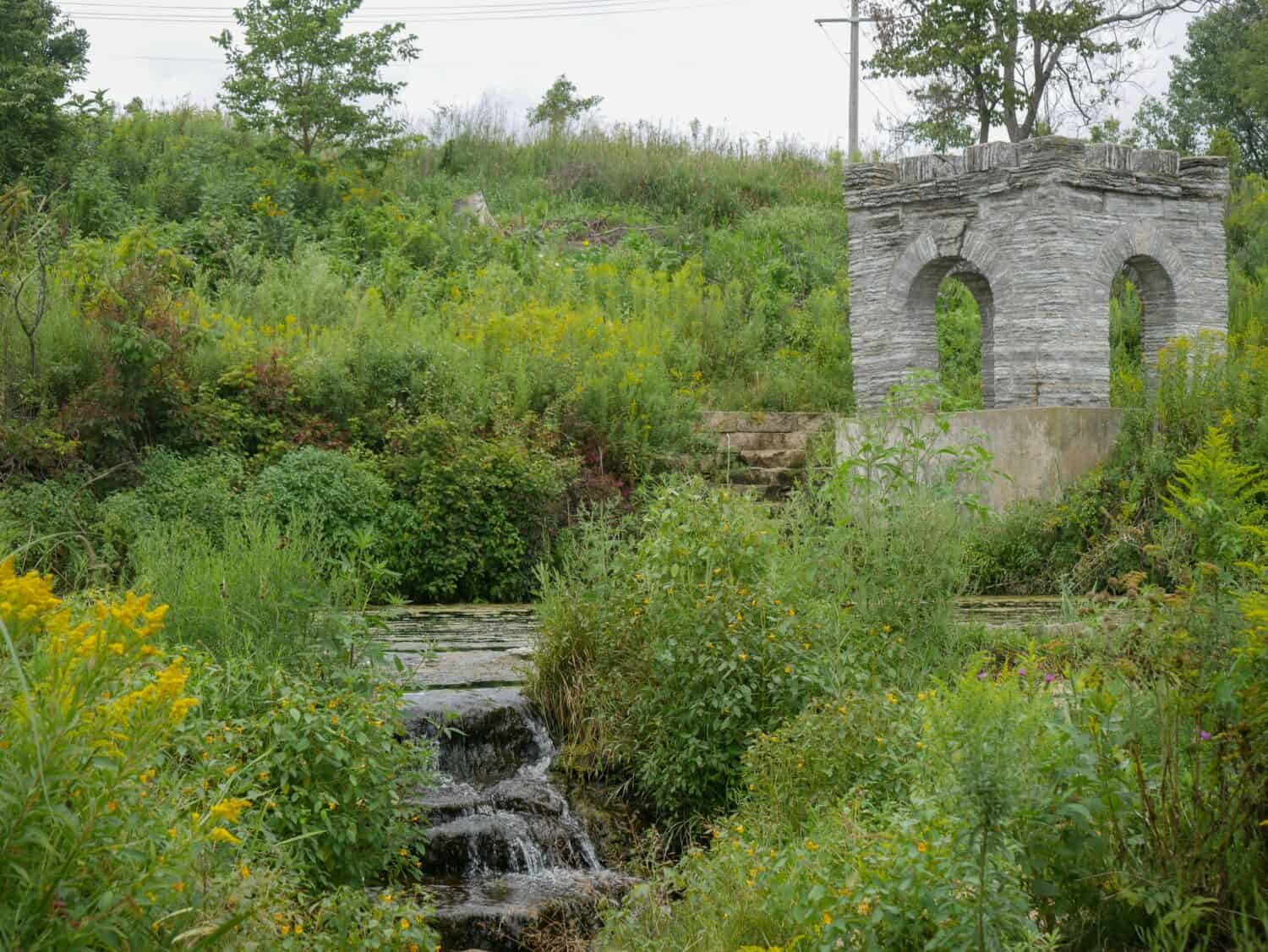
U.S. soldiers camped at Coldwater Spring during Fort Snelling’s construction, making it the first American settlement in Minnesota.
©Taxomony/Shutterstock.com
A short distance from Minnehaha Falls, you’ll find Coldwater Spring. Once a significant site for the Dakota people, this spring is now a part of the Mississippi National River and Recreation Area. The spring water is crystal clear, making it a serene spot for contemplation. Additionally to the stunning sight, visiting the Coldwater Spring offers you a brush with history. The spring played a pivotal role during the construction of Fort Snelling — a former military fortification built in 1819.
3. Minneopa State Park Spring
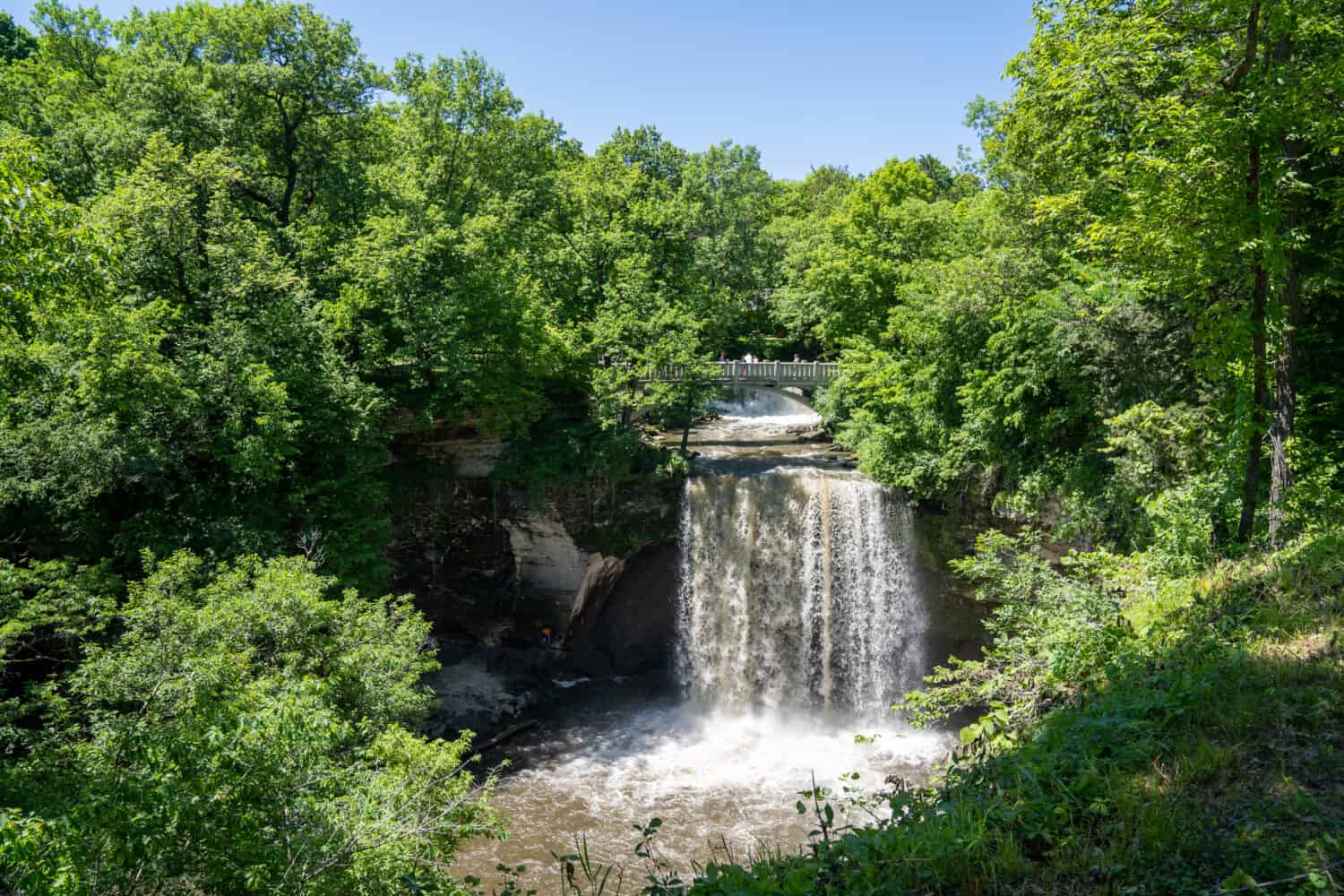
The word Minneopa comes from the Dakota language and is interpreted to mean “water falling twice,” referring to the waterfalls in the park.
©melissamn/Shutterstock.com
A must-visit in Minnesota is the Minneopa State Park, south of Minneapolis. This spring feeds Minneopa Creek, which cascades over limestone cliffs to form the picturesque Minneopa Falls—the largest waterfall in southern Minnesota. Enjoy the beautiful sighting from afar, as these falls are not recommended for swimming.
4. Big Spring in Beaver Creek

Early farmers used the spring as a cooling system for their butter, cream, milk, and other farm goods.
©John Brueske/Shutterstock.com
In the southeast corner of Minnesota, the Big Spring lies within the Beaver Creek Valley State Park. The spring, bursting forth from ancient limestone, is the region’s lifeblood.
The Big Spring is a karst spring formed from the dissolution of soluble rocks such as limestone. The water in the spring journeys underground, weaving through hidden passages and secret caverns before emerging into the daylight.
This spring is also a historical marvel. Native American tribes and early settlers relied on this water source for sustenance and survival.
Want to go for a visit? The spring is located near the main campground of Beaver Creek Valley State Park. You can reach it by following a well-marked trail that wanders through lush forests and open meadows.
5. Pipestone National Monument Spring
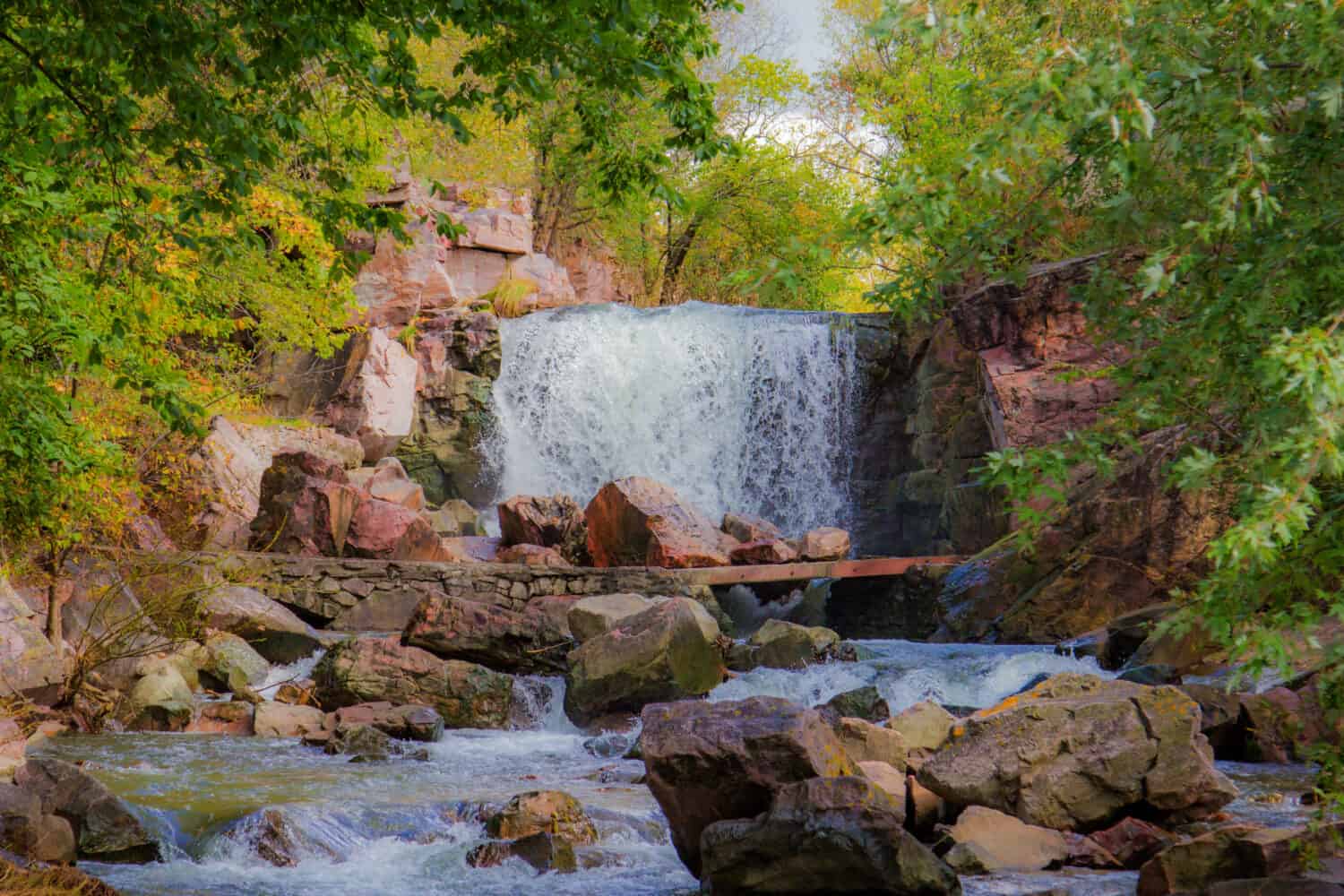
Native Americans visited the pipestone quarries to acquire the red pipestone to craft bowls for their sacred ceremonial pipes.
©PBouman/Shutterstock.com
If you are in the southwest corner of Minnesota, visit the Pipestone National Monument. The site holds deep cultural significance for multiple indigenous tribes, including the Dakota, Lakota, and other Plains Indians.
This spring, also called “The Oracle,” is a beautiful spot amidst the quartzite cliffs. The spring flows through the park and drops in the majestic Winnewissa Falls. If you’re there on a trip, remember to stop by the nearby visitor’s center to learn about the area’s rich indigenous history.
6. Itasca State Park Springs
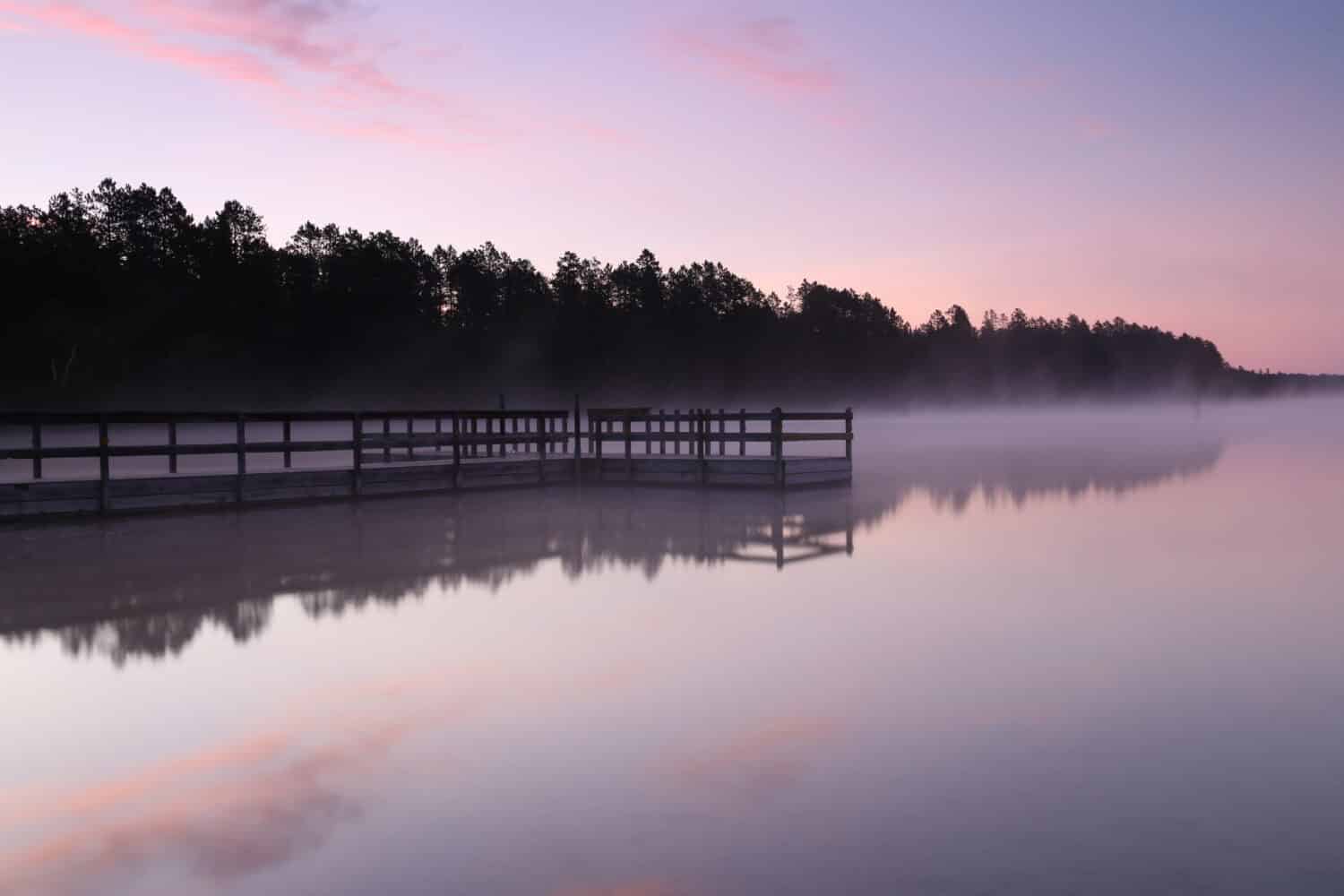
Lake Itasca feeds the Mississippi River, which flows 2552 miles to the Gulf of Mexico.
©Ryan Kashmark/Shutterstock.com
Journey to Itasca State Park, the oldest state park in Minnesota, where dozens of tiny springs feed Lake Itasca. This small glacier lake is the Mississippi River’s primary source.
Nestled in the park’s wilderness, these tiny springs offer hikers and nature enthusiasts a refreshing respite. While on a visit, don’t miss the opportunity to walk across the stepping stones marking the river’s humble beginning.
7. Carley State Park Spring
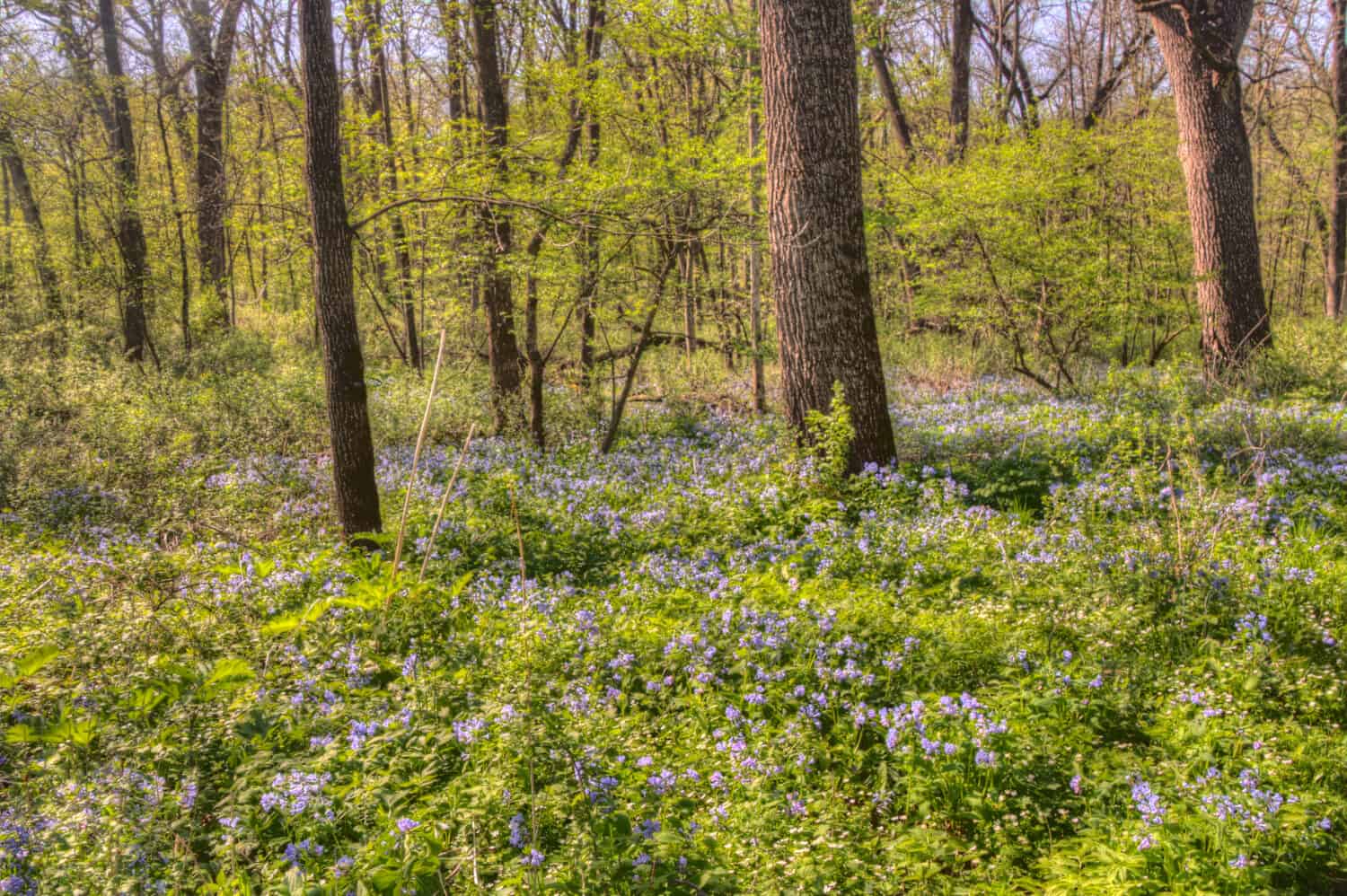
The growth and vibrance of bluebell flowers is a key feature of Carley State Park.
©Jacob Boomsma/Shutterstock.com
A hidden jewel in southeastern Minnesota is the Carley State Park. This park, known for its bluebell flowers, also hosts a spring-fed trout stream. This place might be your paradise if you’re an angler or a birdwatcher. Carley State Park is perfect for a quieter, more peaceful experience.
After sighting this park’s beautiful waters and wildflowers, you can try to see a rare American bison herd.
8. Judge C.R. Magney State Park Springs

Devil’s Kettle is a waterfall that sits on the Brule River. It splits in two, with one part falling into a mysterious hole in a cliff face.
©MS7503/Shutterstock.com
Head to northeastern Minnesota for a visit to the springs in Judge C.R. Magney State Park. This park is home to multiple springs, flowing into the intriguing Devil’s Kettle, a waterfall that splits into two, with one part disappearing into a mysterious pothole. Historically, there has been no concrete answer as to where the water goes. Minnesota’s Department of Natural Resources, though, has concluded that the water that disappears into the rock at Devil’s Kettle reenters the Brule River, the waterfall’s source, from underground.
A hike is the best option to discover the park and this stunning waterfall.
9. Nerstrand Big Woods State Park Spring
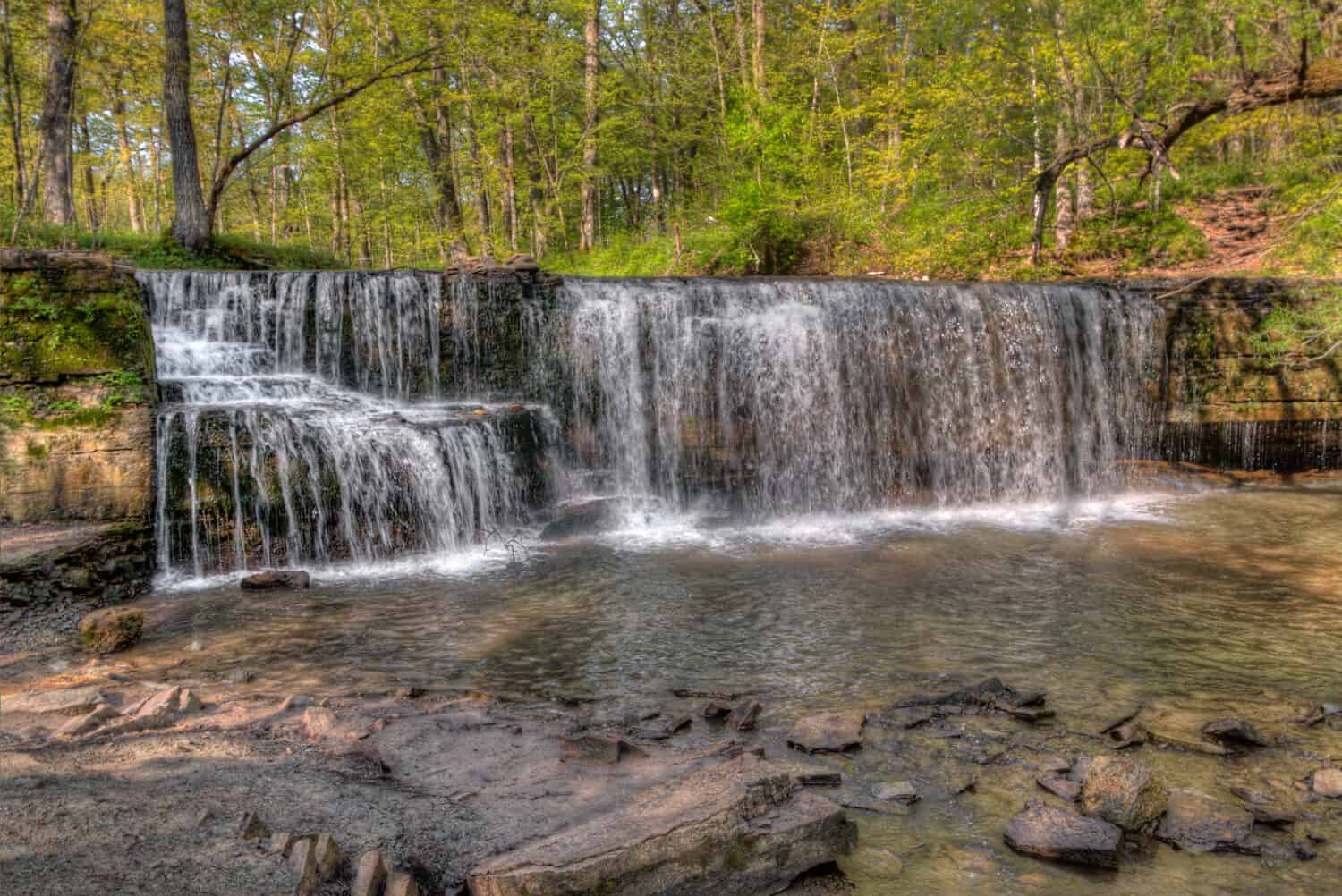
Nerstrand Big Woods State Park has 11 miles of hiking trails to enjoy.
©Jacob Boomsma/Shutterstock.com
South of Minneapolis, besides the small town of Nerstrand, is the Nerstrand Big Woods State Park. This park’s centerpiece is the Hidden Falls, a small spring-fed waterfall amidst the hardwood forest.
During spring, visitors are greeted by a vibrant display of wildflowers. And during the fall, the forest foliage is full of vibrant colors.
Conclusion
These springs, each bearing a unique charm, offer a visual treat and a chance to understand the local ecology, history, and culture of the North Star State. So, next time you’re planning a Minnesota escapade, remember to include them in your itinerary.
Summary of 9 Natural Springs in Minnesota
| Number | Spring | Location |
|---|---|---|
| 1 | Minnehaha Falls | Hennepin County |
| 2 | Coldwater Spring | Hennepin County |
| 3 | Minneopa State Park Spring | Blue Earth County |
| 4 | Big Spring, Beaver Creek State Park | Houston County |
| 5 | Pipestone National Monument Spring | Pipestone County |
| 6 | Itasca State Park Springs | Clearwater, Hubbard, and Becker Counties |
| 7 | Carley State Park Spring | Wabasha County |
| 8 | Judge C.R. Magney State Park Springs | Cook County |
| 9 | Nerstrand Big Woods State Park Spring | Rice County |
Thank you for reading! Have some feedback for us? Contact the AZ Animals editorial team.

